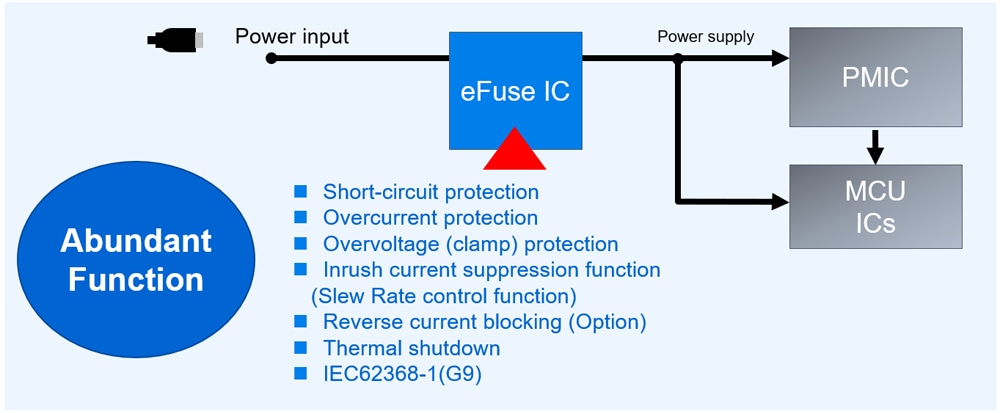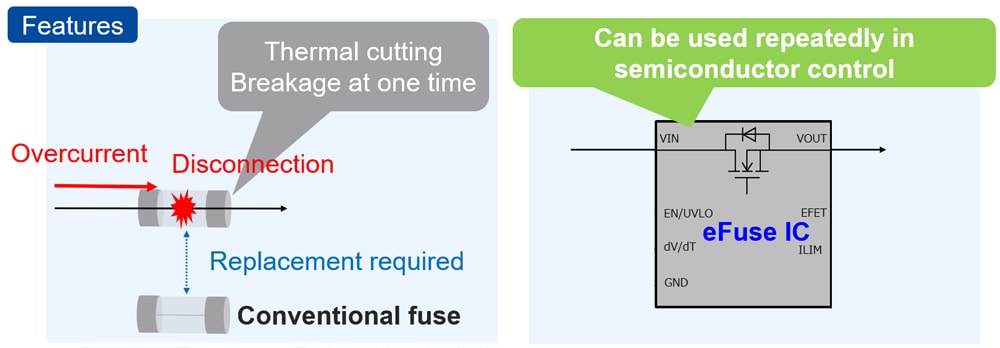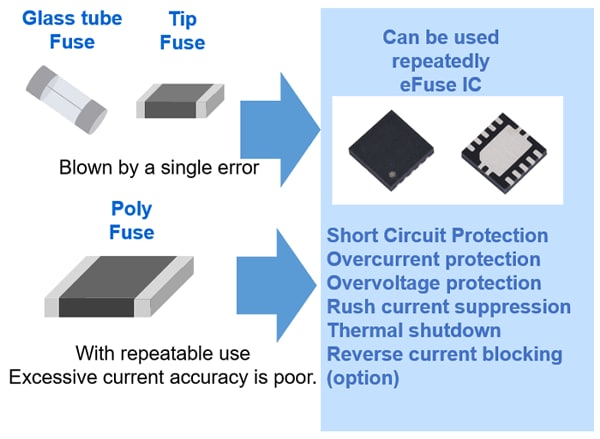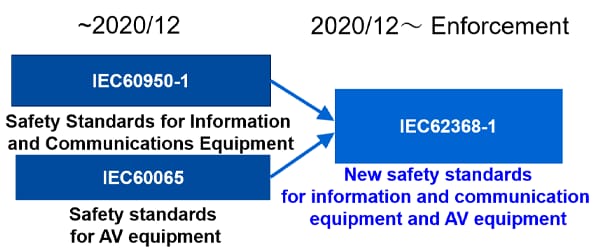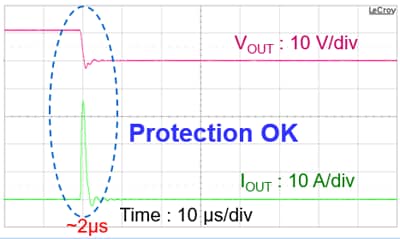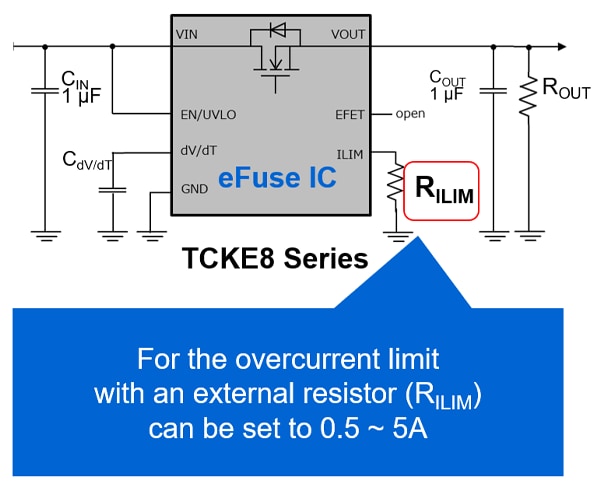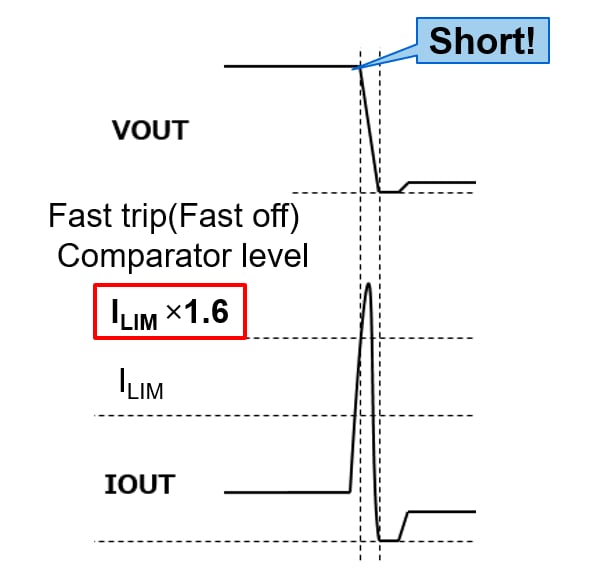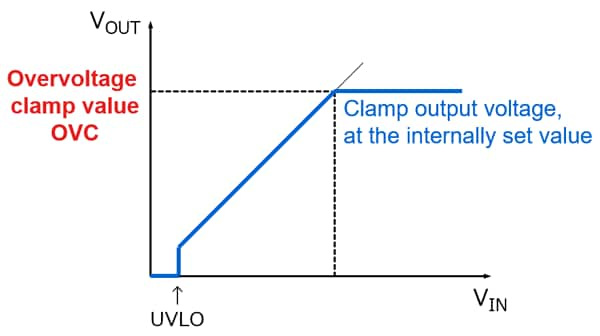- General Top
- SEMICONDUCTOR
- STORAGE
- COMPANY
-
My ToshibaSemicon
- Semiconductor Top
-
ApplicationsAutomotive
Body Electronics
xEV
In-Vehicle Infotainment
Advanced Driver-Assistance Systems (ADAS)
Chassis
IndustrialInfrastructure
BEMS/HEMS
Factory Automation
Commercial Equipment
Consumer/PersonalIoT Equipment
Healthcare
Wearable Device
Mobile
Computer Peripherals
-
ProductsAutomotive Devices
Discrete Semiconductor
Diodes
Transistors
Logic ICs
Analog Devices
Digital Devices
Wireless Devices
※
: Products list (parametric search)
Power SemiconductorsSiC Power Devices
※
: Products list (parametric search)
Isolators/Solid State RelaysPhotocouplers
Digital Isolators
Solid State Relays
Fiber Optic Transmitting Modules
※
: Products list (parametric search)
MOSFETsIGBTs/IEGTsBipolar Transistors※
: Products list (parametric search)
Diodes※
: Products list (parametric search)
MicrocontrollersMotor Driver ICsIntelligent Power ICs※
: Products list (parametric search)
Power Management ICsLinear ICs※
: Products list (parametric search)
General Purpose Logic ICsLinear Image SensorsOther Product ICsOther Product ICs
※
: Products list (parametric search)
-
Design & Development
Design & Development
Innovation Centre
At the Toshiba Innovation Centre we constantly strive to inspire you with our technologies and solutions. Discover how to place us at the heart of your innovations.
-
Knowledge
Knowledge
Highlighted Topics
Further Materials
Other
- Where To Buy
- Part Number & Keyword Search
- Cross Reference Search
- Parametric Search
- Stock Check & Purchase
This webpage doesn't work with Internet Explorer. Please use the latest version of Google Chrome, Microsoft Edge, Mozilla Firefox or Safari.
require 3 characters or more. Search for multiple part numbers fromhere.
The information presented in this cross reference is based on TOSHIBA's selection criteria and should be treated as a suggestion only. Please carefully review the latest versions of all relevant information on the TOSHIBA products, including without limitation data sheets and validate all operating parameters of the TOSHIBA products to ensure that the suggested TOSHIBA products are truly compatible with your design and application.Please note that this cross reference is based on TOSHIBA's estimate of compatibility with other manufacturers' products, based on other manufacturers' published data, at the time the data was collected.TOSHIBA is not responsible for any incorrect or incomplete information. Information is subject to change at any time without notice.
require 3 characters or more.
Slew rate control (Suppressing rush current)
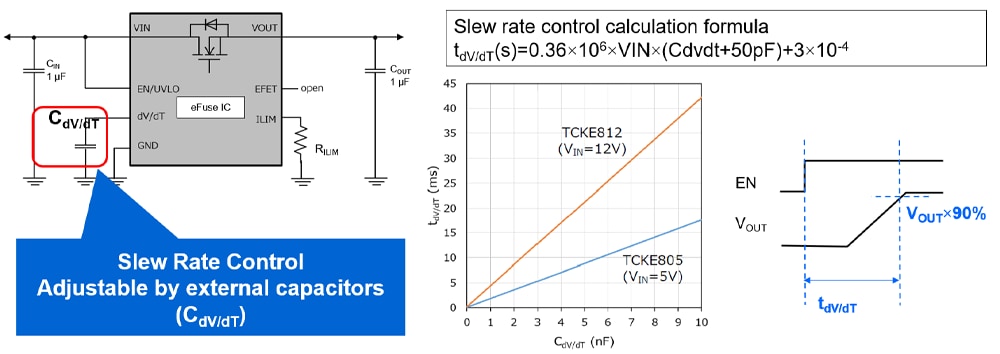
When the output is turned on, an inrush current flows to charge the capacitor connected to the load side. If this current is too large, the overcurrent protection circuit may malfunction, making it impossible to start up, or overshooting may occur in the output voltage.
To prevent this, this function limits the inrush current and controls the slew rate at the rise of the output voltage.

The slew rate control function can control the rise of the output voltage with an external capacitor.
The inside of the red frame in the left figure is the external capacitor CdVdT.
By changing this value, the rising slew rate of the output voltage can be adjusted.
The capacitance of the external capacitor CdVdT and the rise time tdV / dT of the output voltage can be expressed by the formula on the upper right.
The graph on the right shows the above relationship.
From this graph, the horizontal axis shows that the larger the capacitance, the slower the rising tdV / dT of the output voltage on the vertical axis. The rush current can also be reduced by slowly rising this output voltage.
In the configuration with discrete parts, it was necessary to change various constants such as gate voltage, current adjustment, gate capacitance value, etc. to change the slew rate, but with the eFuse IC, the slew rate can be adjusted with a single small capacitor.
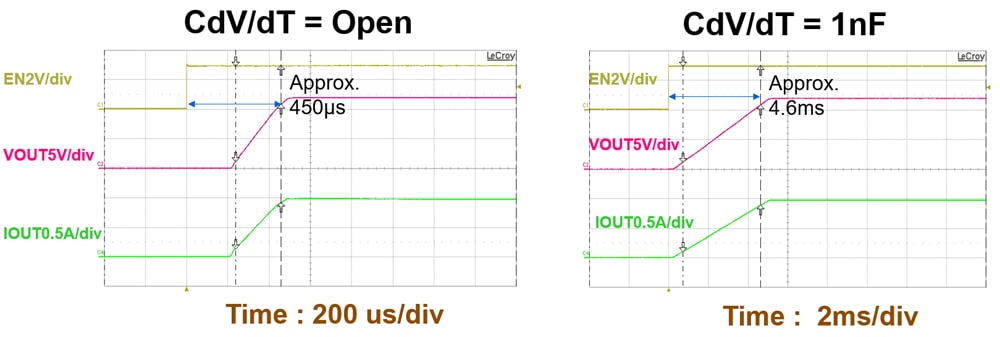
The figure below is an example of rush current suppression using slew rate control.
The waveform on the left is the rising waveform of the output voltage and current with dV / dT terminal open, and the waveform on the right is the waveform when 1nF is added to dV / dT terminal.
The slew rate can be adjusted by adjusting the CdVdT terminal capacitance.

- Prev
- 10/10
Basics of eFuse ICs
Related information
- Product Web Page
- Applidcation Notes
- FAQ
- Parametric searches for all Toshiba eFuse IC products are available here:
- Stock Check & Purchase Toshiba eFuse IC here


